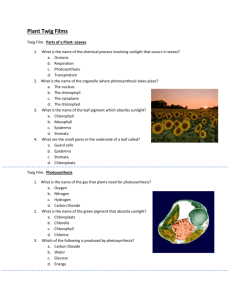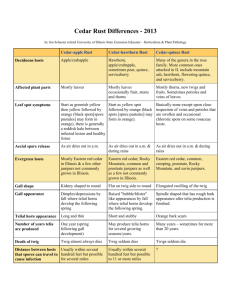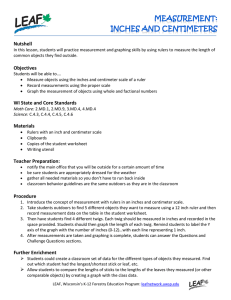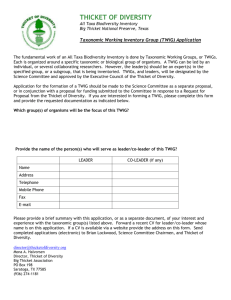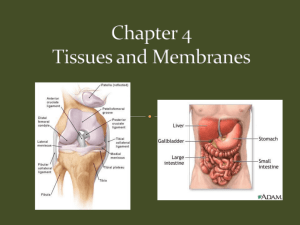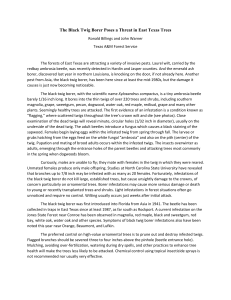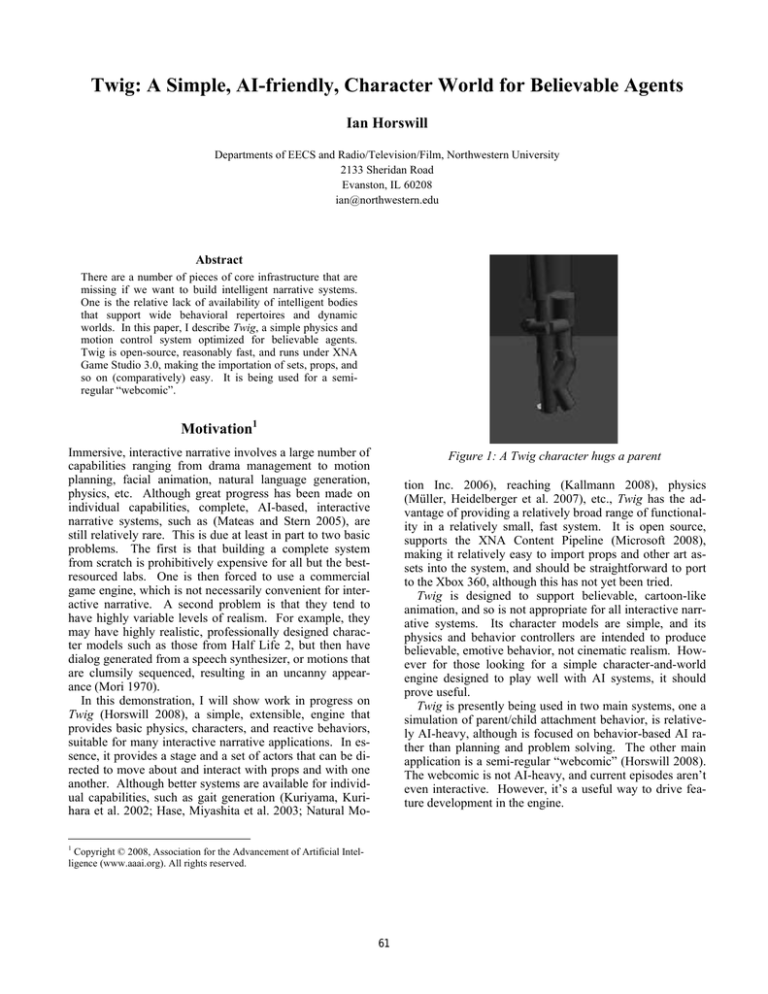
Twig: A Simple, AI-friendly, Character World for Believable Agents
Ian Horswill
Departments of EECS and Radio/Television/Film, Northwestern University
2133 Sheridan Road
Evanston, IL 60208
ian@northwestern.edu
Abstract
There are a number of pieces of core infrastructure that are
missing if we want to build intelligent narrative systems.
One is the relative lack of availability of intelligent bodies
that support wide behavioral repertoires and dynamic
worlds. In this paper, I describe Twig, a simple physics and
motion control system optimized for believable agents.
Twig is open-source, reasonably fast, and runs under XNA
Game Studio 3.0, making the importation of sets, props, and
so on (comparatively) easy. It is being used for a semiregular “webcomic”.
Motivation1
Immersive, interactive narrative involves a large number of
capabilities ranging from drama management to motion
planning, facial animation, natural language generation,
physics, etc. Although great progress has been made on
individual capabilities, complete, AI-based, interactive
narrative systems, such as (Mateas and Stern 2005), are
still relatively rare. This is due at least in part to two basic
problems. The first is that building a complete system
from scratch is prohibitively expensive for all but the bestresourced labs. One is then forced to use a commercial
game engine, which is not necessarily convenient for interactive narrative. A second problem is that they tend to
have highly variable levels of realism. For example, they
may have highly realistic, professionally designed character models such as those from Half Life 2, but then have
dialog generated from a speech synthesizer, or motions that
are clumsily sequenced, resulting in an uncanny appearance (Mori 1970).
In this demonstration, I will show work in progress on
Twig (Horswill 2008), a simple, extensible, engine that
provides basic physics, characters, and reactive behaviors,
suitable for many interactive narrative applications. In essence, it provides a stage and a set of actors that can be directed to move about and interact with props and with one
another. Although better systems are available for individual capabilities, such as gait generation (Kuriyama, Kurihara et al. 2002; Hase, Miyashita et al. 2003; Natural Mo-
Figure 1: A Twig character hugs a parent
tion Inc. 2006), reaching (Kallmann 2008), physics
(Müller, Heidelberger et al. 2007), etc., Twig has the advantage of providing a relatively broad range of functionality in a relatively small, fast system. It is open source,
supports the XNA Content Pipeline (Microsoft 2008),
making it relatively easy to import props and other art assets into the system, and should be straightforward to port
to the Xbox 360, although this has not yet been tried.
Twig is designed to support believable, cartoon-like
animation, and so is not appropriate for all interactive narrative systems. Its character models are simple, and its
physics and behavior controllers are intended to produce
believable, emotive behavior, not cinematic realism. However for those looking for a simple character-and-world
engine designed to play well with AI systems, it should
prove useful.
Twig is presently being used in two main systems, one a
simulation of parent/child attachment behavior, is relatively AI-heavy, although is focused on behavior-based AI rather than planning and problem solving. The other main
application is a semi-regular “webcomic” (Horswill 2008).
The webcomic is not AI-heavy, and current episodes aren’t
even interactive. However, it’s a useful way to drive feature development in the engine.
1
Copyright © 2008, Association for the Advancement of Artificial Intelligence (www.aaai.org). All rights reserved.
61
System Overview
Props
Twig is implemented as a library that extends Microsoft’s
XNA 3.0 Framework. It provides a simple mass-aggregate
physics engine that supports constraint satisfaction. Objects are represented as collections of point-particles connected by rigid rods, together with a set of collision volumes and meshes for rendering.
From a user’s standpoint, one uses Twig by linking in
the library, creating a subclass of TwigGame (in turn, a
subclass of XNA’s Game class), and populating it with one
or more instances of the Person class (the base class for
humanoid characters) and various props.
The system currently supports a small number of props
needed for testing purposes or for the webcomic. These
include balls, trees, a (functional) merry-go-round, tree
stumps, pen and paper, and boxes.
Passive props can be easily designed using standard
modeling tools such as Maya, SoftImage ModTool, or
Google SketchUp, and then imported as models through
the XNA Content Pipeline. If a passive prop can be approximated using a box for its collision volume, then it can
be imported by making an instance of the BoxModel class
and specifying its rendering mesh. Importing props that
have articulations, more complicated collision volumes, or
behavior, requires writing C# code.
Character Control
The characters can then be directed, either by adding behavioral code directly, or through a scripting interface.
Scripting mode can either read the script from an XML file
in the Content Pipeline, or the system can be run as a server, allowing non-XNA code, or code on other machines, to
control the world. An example of the script code is show
in figure 2. Scripts simply consist of sequences of method
calls into the objects, along with some limited timing logic.
In particular, methods can return information to the script
interpreter for testing when an action has completed.
Implementation
Core physics
Twig provides a mass-aggregate physics system that supposes geometric constraint satisfaction. The system is
based on Jakobsen’s work on the Hitman engine (2001).
Objects are represented as point-masses (particles) connected by rigid rods (distance constraints). These basic
structures are then fleshed out with meshes for rendering,
and collision volumes.
Collision handling Collision volumes of objects are
represented as sets of primitive collision volumes (spheres,
capsules, and oriented bounding-boxes). The engine handles basic collision detection and response, as well as generating percepts (touch, pain) for higher level AI systems.
It should be noted that while the physics is accurate
enough to (usually) look real, no attempt is made to be truly accurate, and there are a number of situations in which
the system wildly violates conservation laws.
titles: "Episode 0: Alpha test"
pause 4
titles: fadefromblack 1
Michael: say "Script ..." Bryan
Bryan: holdforuse script
Bryan: say "Check!" Michael
Michael: say "Physics ..." Bryan
Bryan: lookat script
Bryan: drop script
pause 0.5
Bryan: say "Check!" Michael
Figure 2: Example script fragment
Behavior system
Motor control is implemented primarily through a behavior-based system (Arkin 1998), i.e. a set of simple feedback controllers and state machines, gated by “activation”
levels that are continuously updated; when behaviors are in
competition for a given limb or other resource, an arbitration system selects the current most-active behavior.
Behaviors
Twig is a work in progress. It also supports a relatively
small number of character behaviors:
•
•
•
Locomotion: Approach, PainWithdrawlReflex
(triggered automatically when character is hit),
TeleportTo, PoseAt
Prop manipulation: Hold, HoldForUse, Drop, SitOn, WriteOn
Social: Say, LookAt, Fight, Attach (run to and
hug), Gesture
Discrete action system
Operations which are most naturally thought of as discrete
actions, such as sitting down, saying a phrase, or writing
on a sheet of paper, are implemented through a discrete action system that tracks which actions are currently executing and can distinguish successful completion of an action
from action failure. The discrete action system is intended
primarily for use in conjunction with a reactive planning
system, such as ABL (Mateas and Stern 2002)
Other behaviors can be added, either as reactive (selftriggering) behaviors, or as discrete actions.
62
Attention system
Jakobsen, T. (2001). Advanced Character Physics. Game
Developer's Conference. San Jose, CMP Inc.
Kallmann, M. (2008). "Analytical inverse kinematics with
body posture control." Computer Animation and
Virtual Worlds 19(2): 79-91.
Kuriyama, S., Y. Kurihara, et al. (2002). "Physiological
gait controls with a neural pattern generator." The
Journal of Visualization and Computer Animation
13(2): 107-119.
Mateas, M. and A. Stern (2002). "A Behavior Language
for Story-Based Agents." IEEE Intelligent Systems 17(4): 39-47.
Mateas, M. and A. Stern (2005). Façade.
Microsoft (2008). XNA Game Studio 3.0, Microsoft Corporation.
Mori, M. (1970). "Bukimi no tani." Energy 7(4): 33-35.
Müller, M., B. Heidelberger, et al. (2007). "Position based
dynamics." J. Vis. Comun. Image Represent.
18(2): 109-118.
Natural Motion Inc. (2006). Euphoria:core motion synthesis library, Natural Motion, Inc.
Characters also implement a short-term memory system
used for directing behaviors and visual attention when the
characters are running autonomously (rather than being
scripted or slaved to an external planner). The attention
system periodically scans all objects in view and in shortterm memory and evaluates their salience (importance), valence (goodness/badness), and monitoring priority (how
much to keep an eye on the object). The highest salience
object becomes the new focus of attention, which is then
monitored by the motor behaviors, and the highest monitoring priority object (if different) becomes the gaze target.
This allows characters to move around and shift their attention between objects relatively naturally.
Obtaining Twig
Twig is distributed as free, open-source software under the
Lesser GNU Public Licence (LGPL v.3). The source distribution, example programs, and further documentation
are available from http://twigblog.wordpress.com.
Conclusion
Twig is very much a work in progress. It’s missing a large
swath of features one would eventually want to have, such
as facial animation, support for arbitrary character meshes,
and reach and grasp planning. Most of these features will
be added in time. Part of the idea of making episodic content such as a webcomic is to use the production of the
comic as a way of focusing the development of new features.
In the mean time, Twig provides a relatively lifelike set
of character motions that match the cartoon quality of the
rendering fairly well, making the overall effect believable,
even if it is not realistic per se. I hope that between it being open source and being designed specifically to interface with AI systems that it will prove to be a congenial
environment for intelligent narrative researchers.
References
Arkin, R. (1998). Behavior-Based Robotics. Cambridge,
MIT Press.
Hase, K., K. Miyashita, et al. (2003). "Human gait simulation with a neuromusculoskeletal model and evolutionary computation." The Journal of Visualization and Computer Animation 14(2): 73-92.
Horswill, I. (2008). Lightweight Procedural Animation
with Believable Physical Interactions. Artificial
Intelligence and Interactive Digital Entertainment. Stanford, CA.
Horswill, I. (2008). "Twig (webcomic)." from
http://twigblog.wordpress.com
63

